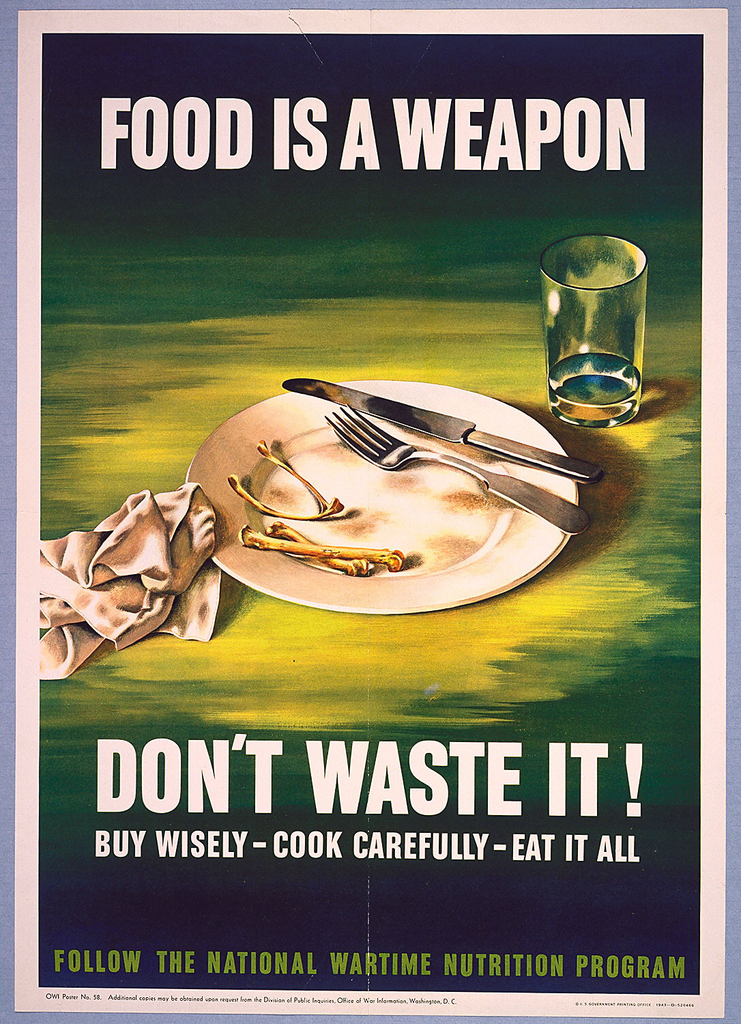During WWII, the US government depended on Americans to volunteer in the war effort. Over 85 million Americans–nearly two thirds of the population–purchased war bonds providing much needed financial support. Women entered the workforce in large numbers helping to produce the thousands of ships, tanks, and airplanes required overseas. Food shortages were a major problem during the war, and the government asked Americans to become as self-sufficient as possible.
This 1943 poster encouraged members of the public to finish everything on their plates and to not waste food. A note that accompanied this poster explained that since the military would require much of the commercially produced canned food that year, Americans needed to preserve their own food to get them through the winter months. Growing “Victory Gardens” and using food stamps were active ways that the public could further help the war effort.
This object is one example of the many posters that the US government mass produced throughout the 1930s and 40s. The Works Progress Administration (WPA) developed a new silk-screening process that could reproduce color posters at a rapid pace. Posters were hung on factory walls, in store windows, and along sidewalks as a constant reminder to the public about their patriotic duty and wartime responsibilities.
Laura Williams is a Masters candidate in the Museum Studies program at New York University. Interested in pursuing a career in curatorial research of United States cultural and social history, Laura earned her Bachelor of Arts in American Studies and History from the University of Maryland in 2013. She currently works with the National Design Awards at Cooper-Hewitt.
